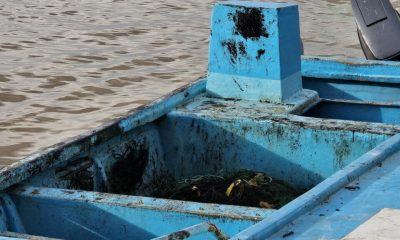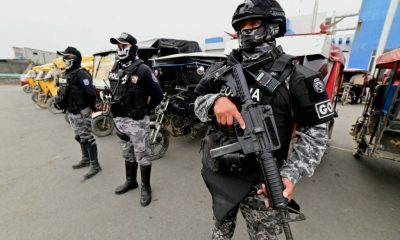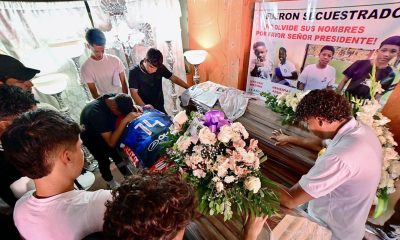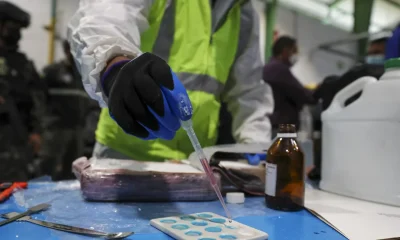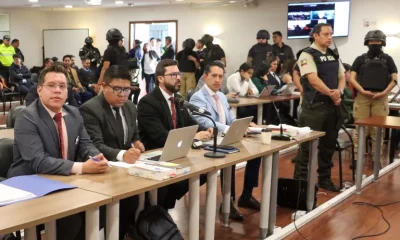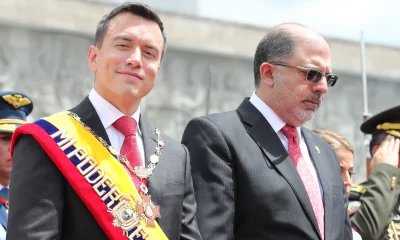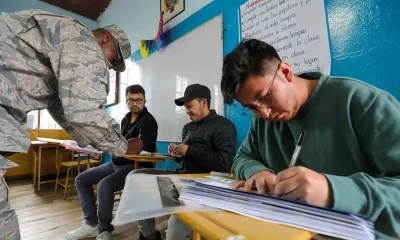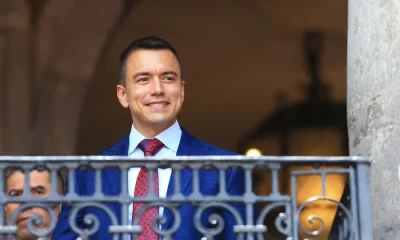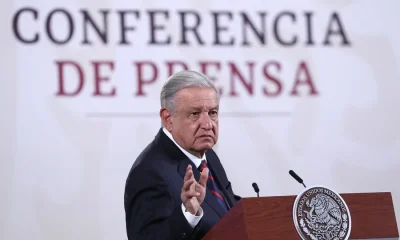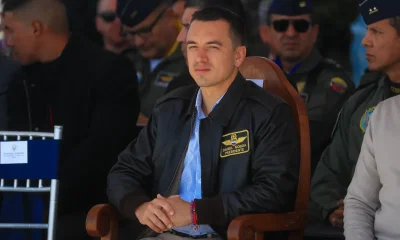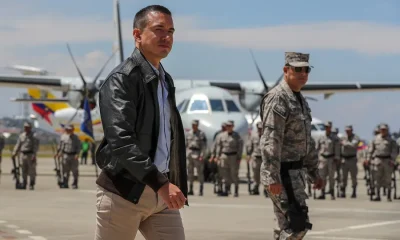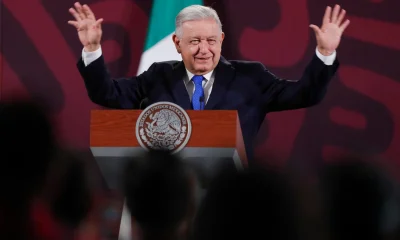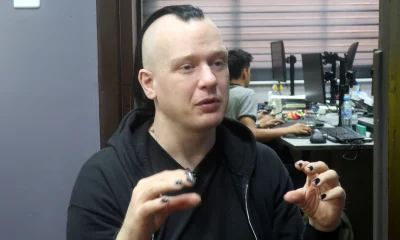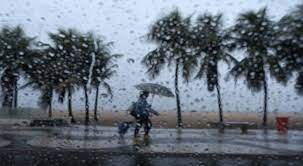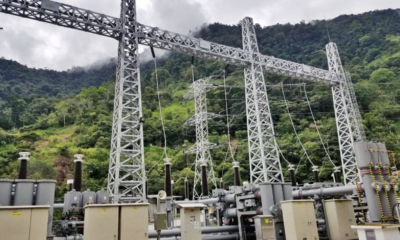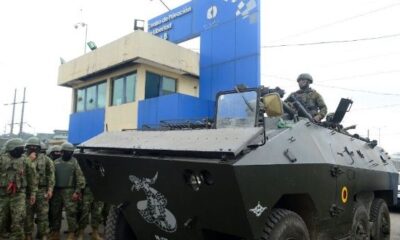International
Alausí, in Ecuador, is still at risk a year after the gigantic avalunc that left 75 dead
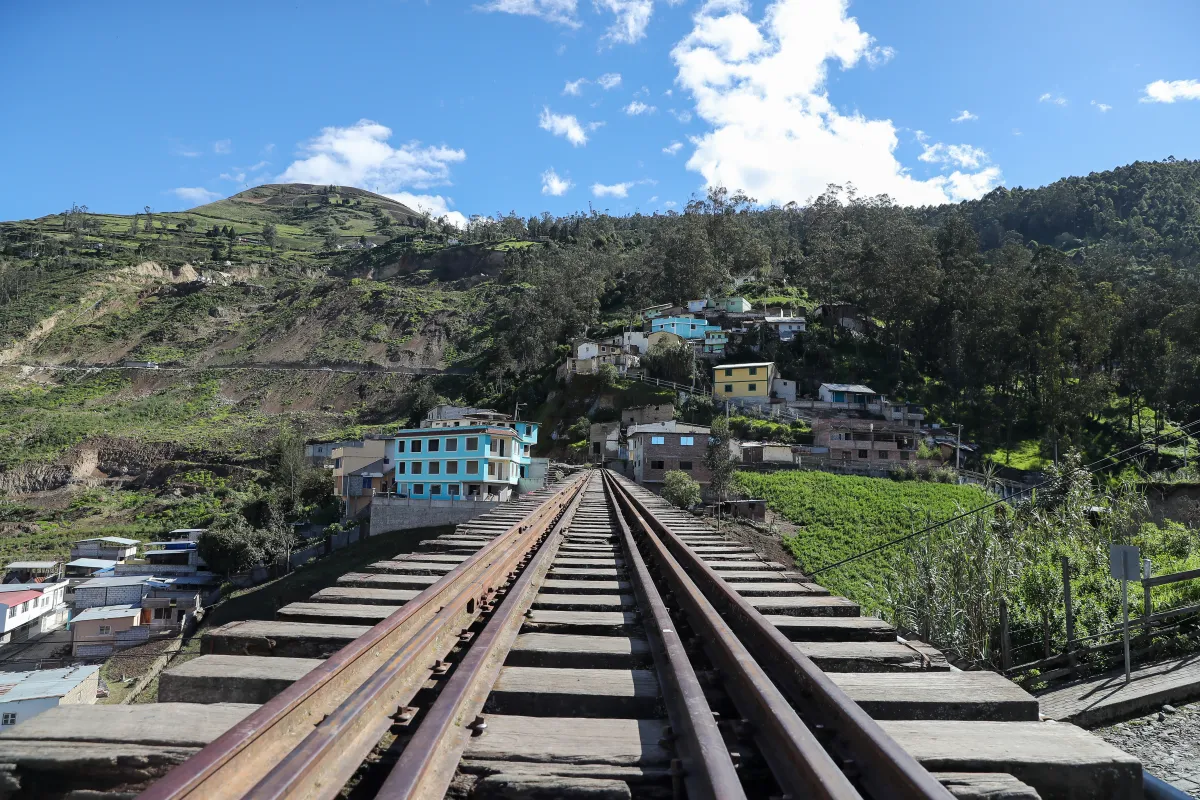
A year after 75 people died from an allh in Alausí, this population of the Andes of Ecuador gradually rises with the effort of its inhabitants, who continue to live under the danger of new landslides while waiting for official help for reconstruction.
On the night of March 26, 2023, thousands of tons of land buried more than fifty houses. It took the relief agencies about three months to rescue the bodies in the midst of the pain and anguish of relatives and neighbors, who joined the work.
Now, in the anglum area, some herbs have begun to cover the land that swallowed part of the population.
“With our machinery we have made some stabilization for the protection of the margin of the homes that were left (safe),” the mayor of Alausí, Remigio Roldán, told EFE.
Without a “concrete response from the State,” he said, “Alausí allied with universities and non-governmental organizations” to solve different problems left by the landslide,” such as the destruction of a water conduction system that fed 8,000 inhabitants.
“Thanks to the European Union (EU) we are receiving funding of about two million dollars for the new system of collection, conduction and re-empowering of the drinking water treatment plant for the 8,000 inhabitants,” Roldán reported.
The mayor highlighted the efforts of the inhabitants to rehabilitate an important road, which connects the south with the center of the Andean region of Ecuador, where they opened a path in the middle of the ‘ground zero’ to peak and shovel.
In addition, about 18 million dollars are needed to stabilize the slope of the entire perimeter of the landslide.
“We can’t let it stay as it is. In the upper part of the collapse we have two communities that do not have a sewer system, we still have septic wells, the problem is still latent,” he said.
Therefore, last February, at the visit of a group of diplomats from European countries, headed by the EU ambassador, Charles-Michel Geurts, the situation was exposed, since the representatives visited the province of Chimborazo – of which Alausí is a part – to analyze potential aid in various sectors.
Geurts highlighted the admiration they have for Alausí, for its people, resilience and vision of the future, while his counterpart from France, Frédéric Desagneaux, mentioned the willingness of the EU for accompaniment in the restoration of the dynamism of Alausí.
The mayor numbered 75 people who died in the all. and pointed out that they have not been able to rescue nine “who remained among the rubble” in the area where 163 families lived.
According to the latest official report of the tragedy, published in November by the Secretariat of Risk Management, there are 65 deceased and 10 who are officially listed with the status of “disappeared” after not being able to find their bodies.
The victims reached 800. “Some,” said Roldán, “have had to emigrate, some are renting apartments, rooms, others are where the relatives are.”
By following the area at risk, they have not allowed the return of the inhabitants to the houses that were left standing on the banks of the avalh: “We do not want to lose more lives. We warn that the problem is still latent, we have a part (in the) that continues to give way to the cracks.”
“We demand the Government to give homes,” Roldán stressed, adding that the investment of 1.5 million dollars has been budgeted for the construction of 57 homes and, although they have the land to carry out the works, they have not made progress because the Government has changed, which has been led by President Daniel Noboa since November 23.
In addition, apart from the allanch polygon, there are two schools with 800 students, who cannot return to their classrooms if the slope is not stabilized.
“We are improvising in other infrastructures that were abandoned for the boys to receive classes,” he said.
Roldán comments that they do not have “the concrete support” of the Government in roads and housing. “We have to adjust to living in the middle of this reality, making all our effort, as a small government (mayor’s office), as communities, as organizations,” he noted.
He recalled that in a visit to Alausí hours after the tragedy occurred, then-President Guillermo Lasso (2021-2023), offered to invest 8 million dollars, but “not a single penny in immediate actions” has not yet been specified.
He lamented that none of the 186 rural communities of Alausí has drinking water, sewerage or sanitation, and pointed out that the State must disburse the 50% advance of a contract for the construction of a hospital, whose cost is around 23 million dollars, but that does not advance either.
In January, the Secretariat of Risk Management presented the roadmap for the recovery of Alausí, with a budget of 10 million dollars financed mainly by international cooperation to rebuild the road that connects with Riobamba, the provincial capital, as well as housing solutions and the delivery of bonds for vulnerable people, among other actions.
International
Rubio rules out 2028 presidential bid if Vance runs
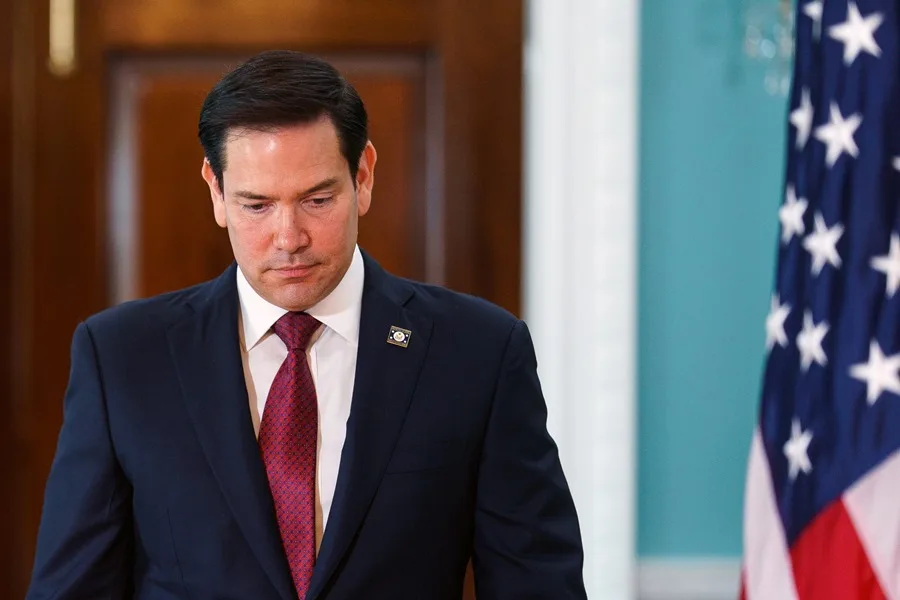
U.S. Secretary of State Marco Rubio said he would not seek the presidency in 2028 if current Vice President JD Vancedecides to run as the Republican nominee to succeed President Donald Trump.
“If JD Vance runs for president, he will be our candidate, and I will be one of the first people to support him,” Rubio said in an interview with Vanity Fair, in which he appeared alongside other senior members of the presidential cabinet.
Rubio, 54, and Vance, 41, are widely viewed as two of the leading Republican figures who could headline the party’s ticket in the 2028 election. Under the U.S. Constitution, Trump is barred from seeking another term after completing two presidential mandates.
In a lighthearted moment during the interview, Vance jokingly offered photographers $1,000 if they managed to make him look better than Rubio in the photos. Both leaders have received public backing from Trump, who last October floated the idea of a joint ticket featuring Rubio and Vance, without clarifying who would lead it.
“I think that if they ever teamed up, they would be unstoppable. I don’t think anyone would run against us,” Trump said at the time.
White House Chief of Staff Susie Wiles, who also took part in the interview, confirmed that Trump does not intend to violate the 22nd Amendment, which prohibits a third presidential term, though she acknowledged that the president is “having fun” with speculation about a possible return to office.
Rubio, the son of Cuban immigrants, served as a Republican senator from 2010 to 2025. He sought the party’s presidential nomination in 2016 but was defeated by Trump after a bruising primary contest. His name was floated as a potential vice presidential pick in 2024, but Vance ultimately secured the spot. After taking office, Trump appointed Rubio as secretary of state, making him the first Latino to hold the position.
International
Authorities search for armed and dangerous suspect in fatal Brown University attack
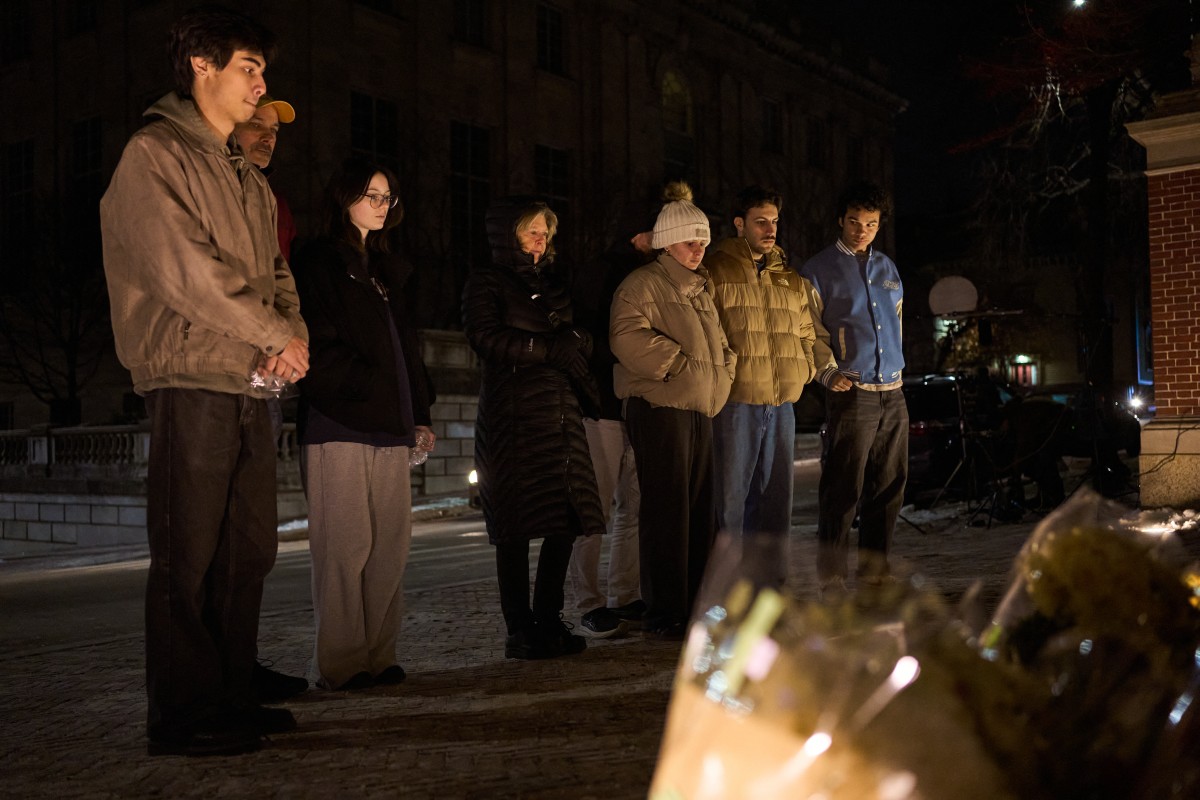
According to the statement, investigators are “seeking the public’s help to identify and speak with an individual” who was seen “near” the suspect at the time of the attack.
The Providence Police Department in Rhode Island released three photos of the person of interest, whose face has been blurred. In the images, the individual is wearing navy blue clothing, what appears to be a green hood, and carrying a light-colored backpack.
Earlier, authorities had released several photos and videos of a suspect described as “approximately 5 feet 8 inches tall, with a stocky build,” dressed in dark clothing, with their face covered by a surgical mask and wearing a beanie. The suspect’s identity remains unknown.
Authorities are offering a $50,000 reward for any information leading to the identification, arrest, and conviction of the person responsible for the killings, who is considered armed and dangerous.
The gunman opened fire on Saturday at Brown University’s engineering and physics building, where exams were being held, killing students Ella Cook and Mukhammad Aziz Umurzokov. The names of the nine people injured have not been released.
International
Police investigate deaths of Rob Reiner and wife as apparent homicide

The Los Angeles Police Department (LAPD) is investigating the deaths of Hollywood actor and filmmaker Rob Reinerand his wife as an “apparent homicide,” amid a wave of tributes to the director of classics such as When Harry Met Sally.
According to U.S. media reports on Sunday, Rob Reiner and Michele Singer Reiner were found dead at their Los Angeles mansion with what appeared to be stab wounds.
Several political figures shared messages of condolence following the reported deaths of the director of A Few Good Menand his wife.
While the LAPD did not officially confirm the identities of the victims, it stated that homicide detectives were dispatched to the Reiner residence.
“At this time, no additional details are available and the investigation into an apparent homicide is ongoing,” the Los Angeles Police Department said in a statement posted on social media.
LAPD Deputy Chief Alan Hamilton told reporters that no arrests have been made and that no individuals are currently being questioned as suspects.
“I’m not going to confirm whether anyone is being questioned at this moment or not. We are going to try to speak with as many family members as we can,” Hamilton said.
CNN reported that a family spokesperson confirmed the deaths of Reiner and his wife.
California Governor Gavin Newsom, former U.S. President Barack Obama, and former Vice President Kamala Harrisissued statements expressing their condolences.
-

 Central America3 days ago
Central America3 days agoPanama seizes over three tons of drugs hidden in Caribbean port container
-

 International2 days ago
International2 days agoPolice investigate deaths of Rob Reiner and wife as apparent homicide
-

 International4 days ago
International4 days agoSeveral people shot in attack on Brown University campus
-

 Central America2 days ago
Central America2 days agoOAS urges swift recount in Honduras as election results remain uncertain
-
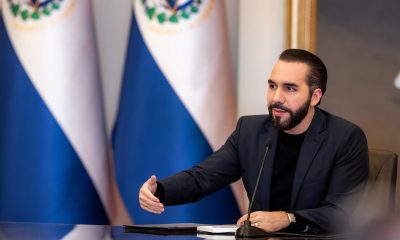
 Central America1 day ago
Central America1 day agoBukele says AI partnership with xAI will transform public education in El Salvador
-
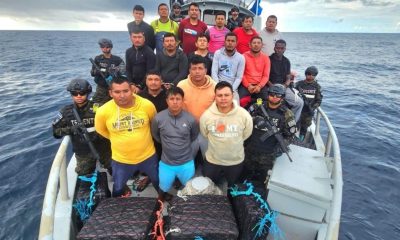
 Central America1 day ago
Central America1 day agoEl Salvador ranks among top countries in the Americas in fight against organized crime
-

 International4 days ago
International4 days agoU.S. and Mexico Reach Deal to Address Water Deficit Under 1944 Treaty
-
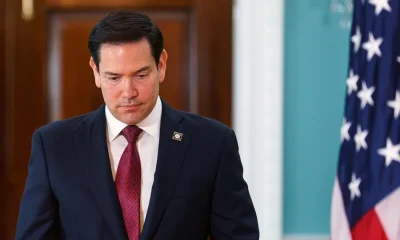
 International6 hours ago
International6 hours agoRubio rules out 2028 presidential bid if Vance runs
-

 Central America6 hours ago
Central America6 hours agoArrests and clashes in Tegucigalpa as vote count continues after Honduras election
-
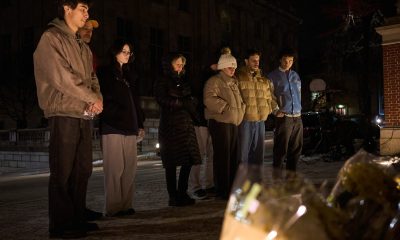
 International6 hours ago
International6 hours agoAuthorities search for armed and dangerous suspect in fatal Brown University attack

























